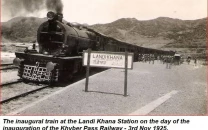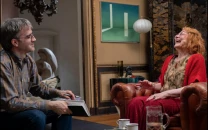ATC dismisses Imran Khan's application seeking transfer of cases to sessions court
Prosecutor says Imran gathered people in capital, insisted they attack important installations

The court later adjourns the hearing until December 19 after hearing arguments. PHOTO: REUTERS
Khan appeared before the ATC for the fourth time as his counsel Babar Awan contested the terrorism clauses invoked in the cases. He requested the court to remove the clauses and send the cases to a sessions court.
Awan argued that “since the element of terrorism is not there in any of the cases, they can be transferred to the sessions court”. “Intention is the first thing that should be considered in such offences,” he said and added, “It would be interesting to see with what intentions people had gathered in the capital” during the sit-in. He said police had not seized any weapon from the protesters who were arrested.
ATC orders Imran to visit police station for testimony
He said “no passer-by or citizen was terrorised during PTI’s long march and sit-in” and alleged that all the cases against Khan were based on political persecution, not prosecution. “Section 7 of the Anti-Terrorism Act (ATA) 1997 is a stigma. Even the safest and sacred places in the world are not safe. K-P itself has been facing terrorism for a long time.”
Awan continued that in all the FIRs, no specific allegation had been levelled against the PTI chairman and “absolutely no act of terrorism took place”.
“Thousands of people were marching for their demands and when they pushed the gate of Parliament, it fell down,” he said. “Presidency’s gate is as weak as the president himself,” Awan quipped. According to him, none of the witnesses had stated that they were terrorised.
Rejecting Awan’s arguments, Prosecutor Chaudhry Shafqaat said, “PTI’s long march was aimed at toppling the elected government by the use of force”. “If a person is accused of extortion, even he is tried under ATA and so is someone who attacks the armed or civilian forces,” he said, adding that dozens of policemen were attacked and injured in the line of duty. He said several weapons had been seized from the suspects. In addition, he said, medical reports of the injured police officials had been submitted to the court.
PTI will now go after ‘imam of corruption’ in Sindh: Imran Khan
“Imran Khan has a lead role in all the four cases. He is the main accused who gathered people in the capital and urged them to attack the PM House, Presidency, Parliament and other important installations. He also threatened the police IG,” said Shafqaat.
He said Khan and Pakistan Awami Tehreek (PAT) chief Tahirul Qadri made hate speeches and the protesters were not only armed but they even had a crane to remove road blockades.
“There was also a recorded call between Imran Khan and Arif Alvi discussing protesters’ entry into the PTV building, suspending the transmission. On the leaders’ call, people attacked the state installation and everything is on record.”
Khan, Qadri and several others were booked after the protesters beat up SSP Asmatullah Jenujo, attacked Parliament and ransacked the PTV headquarters. Khan and Qadri were also booked for misuse of loudspeakers during the sit-ins.
Imran’s bail extended till Monday
On August 31, 2014 PTI and PAT workers marched on Parliament House and PM House while clashing with police along the way. At least three protesters died and hundreds of protesters and policemen were injured.
The next morning, hundreds of protesters ransacked the PTV offices on the Constitution Avenue. The sit-ins, however, ended in the wake of the Peshawar school massacre.
The ATC will resume the hearing on December 19.


















COMMENTS
Comments are moderated and generally will be posted if they are on-topic and not abusive.
For more information, please see our Comments FAQ